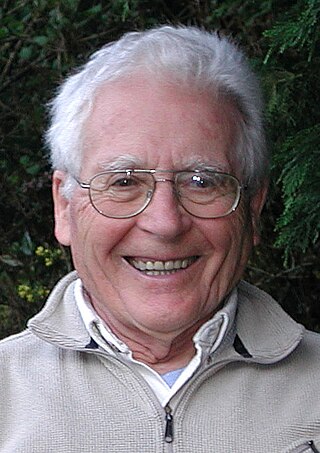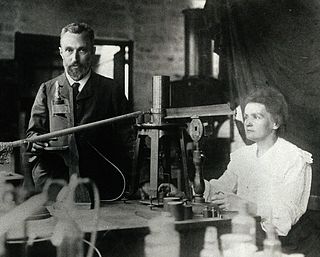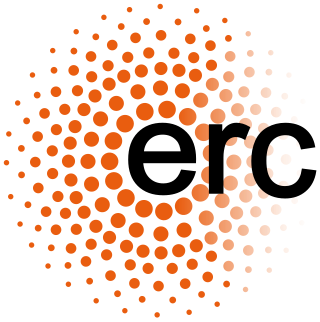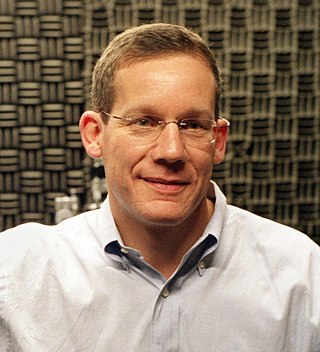
James Ephraim Lovelock was an English independent scientist, environmentalist and futurist. He is best known for proposing the Gaia hypothesis, which postulates that the Earth functions as a self-regulating system.

A scientist is a person who researches to advance knowledge in an area of the natural sciences.
The year 1913 in science and technology involved some significant events, listed below.

The Wolf Prize is an international award granted in Israel, that has been presented most years since 1978 to living scientists and artists for "achievements in the interest of mankind and friendly relations among people ... irrespective of nationality, race, colour, religion, sex or political views."
The year 1937 in science and technology involved some significant events, listed below.

The Max Planck Society for the Advancement of Science is a formally independent non-governmental and non-profit association of German research institutes. Founded in 1911 as the Kaiser Wilhelm Society, it was renamed to the Max Planck Society in 1948 in honor of its former president, theoretical physicist Max Planck. The society is funded by the federal and state governments of Germany.

Cancer Research UK (CRUK) is the world's largest independent cancer research organisation. It is registered as a charity in the United Kingdom and Isle of Man, and was formed on 4 February 2002 by the merger of The Cancer Research Campaign and the Imperial Cancer Research Fund. Cancer Research UK conducts research using both its own staff and grant-funded researchers. It also provides information about cancer and runs campaigns aimed at raising awareness and influencing public policy.

Kenichi Fukui was a Japanese chemist. He became the first person of East Asian ancestry to be awarded the Nobel Prize in Chemistry when he won the 1981 prize with Roald Hoffmann, for their independent investigations into the mechanisms of chemical reactions. Fukui's prize-winning work focused on the role of frontier orbitals in chemical reactions: specifically that molecules share loosely bonded electrons which occupy the frontier orbitals, that is, the Highest Occupied Molecular Orbital (HOMO) and the Lowest Unoccupied Molecular Orbital (LUMO).

John Bannister Goodenough was an American materials scientist, a solid-state physicist, and a Nobel laureate in chemistry. From 1986 he was a professor of Materials Science, Electrical Engineering and Mechanical Engineering, at the University of Texas at Austin. He is credited with identifying the Goodenough–Kanamori rules of the sign of the magnetic superexchange in materials, with developing materials for computer random-access memory and with inventing cathode materials for lithium-ion batteries.

The European Research Council (ERC) is a public body for funding of scientific and technological research conducted within the European Union (EU). Established by the European Commission in 2007, the ERC is composed of an independent Scientific Council, its governing body consisting of distinguished researchers, and an Executive Agency, in charge of the implementation. It forms part of the framework programme of the union dedicated to research and innovation, Horizon 2020, preceded by the Seventh Research Framework Programme (FP7). The ERC budget is over €13 billion from 2014 – 2020 and comes from the Horizon 2020 programme, a part of the European Union's budget. Under Horizon 2020 it is estimated that around 7,000 ERC grantees will be funded and 42,000 team members supported, including 11,000 doctoral students and almost 16,000 post-doctoral researchers.

Israel Academy of Sciences and Humanities, based in Jerusalem, was established in 1961 by the State of Israel to foster contact between Israeli scholars in the sciences and humanities and create a think tank for advising the government on research projects of national importance. Its members include many of Israel's most distinguished scholars.

Robert Howard GrubbsForMemRS was an American chemist and the Victor and Elizabeth Atkins Professor of Chemistry at the California Institute of Technology in Pasadena, California. He was a co-recipient of the 2005 Nobel Prize in Chemistry for his work on olefin metathesis.
Research Corporation for Science Advancement (RCSA) is an organization in the United States devoted to the advancement of science, funding research projects in the physical sciences. Since 1912, Research Corporation for Science Advancement has identified trends in science and education, financing many scientific research projects.
Through history, the systems of economic support for scientists and their work have been important determinants of the character and pace of scientific research. The ancient foundations of the sciences were driven by practical and religious concerns and or the pursuit of philosophy more generally. From the Middle Ages until the Age of Enlightenment, scholars sought various forms of noble and religious patronage or funded their own work through medical practice. In the 18th and 19th centuries, many disciplines began to professionalize, and both government-sponsored "prizes" and the first research professorships at universities drove scientific investigation. In the 20th century, a variety of sources, including government organizations, military funding, patent profits, corporate sponsorship, and private philanthropies, have shaped scientific research.

Charles M. Lieber is an American chemist, inventor, nanotechnologist, and writer. In 2011, Lieber was named the leading chemist in the world for the decade 2000–2010 by Thomson Reuters, based on the impact of his scientific publications. He is known for his contributions to the synthesis, assembly and characterization of nanoscale materials and nanodevices, the application of nanoelectronic devices in biology, and as a mentor to numerous leaders in nanoscience.

Sir Goldsworthy Gurney was a British surgeon, chemist, architect, builder, lecturer and consultant. He was a prototypical British gentleman scientist and inventor of the Victorian era.

Carolyn Ruth Bertozzi is an American chemist and Nobel laureate, known for her wide-ranging work spanning both chemistry and biology. She coined the term "bioorthogonal chemistry" for chemical reactions compatible with living systems. Her recent efforts include synthesis of chemical tools to study cell surface sugars called glycans and how they affect diseases such as cancer, inflammation, and viral infections like COVID-19. At Stanford University, she holds the Anne T. and Robert M. Bass Professorship in the School of Humanities and Sciences. Bertozzi is also an Investigator at the Howard Hughes Medical Institute (HHMI) and is the former director of the Molecular Foundry, a nanoscience research center at Lawrence Berkeley National Laboratory.

Tomas Robert Lindahl is a Swedish-British scientist specialising in cancer research. In 2015, he was awarded the Nobel Prize in Chemistry jointly with American chemist Paul L. Modrich and Turkish chemist Aziz Sancar for mechanistic studies of DNA repair.

The Bronowski Institute of Behavioural Neuroscience is an Australian independent not-for-profit medical research institute that is financially supported entirely by philanthropy, that undertakes clinical and basic research into disorders of brain function and addresses problems of altered biological function in animals and man.















